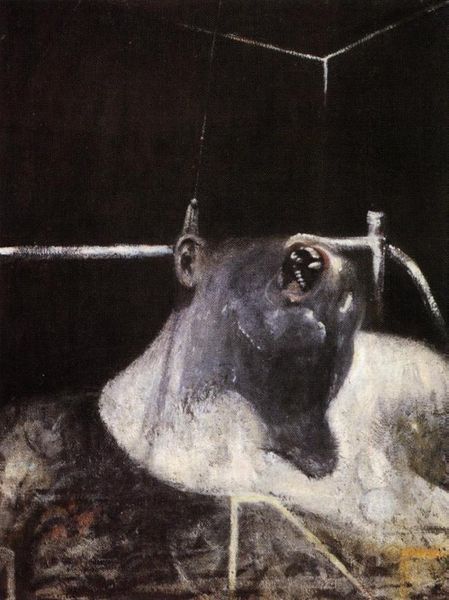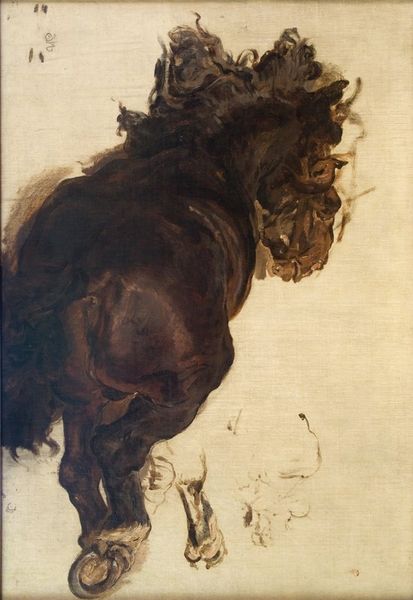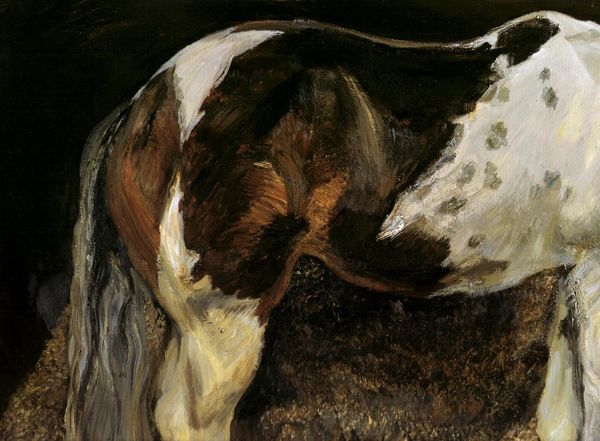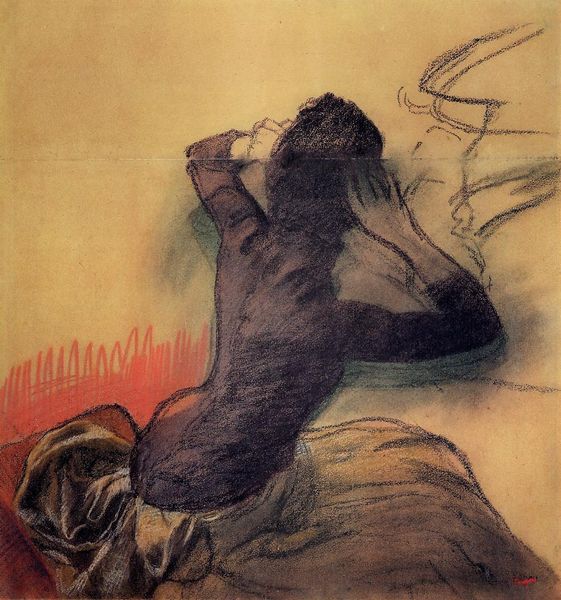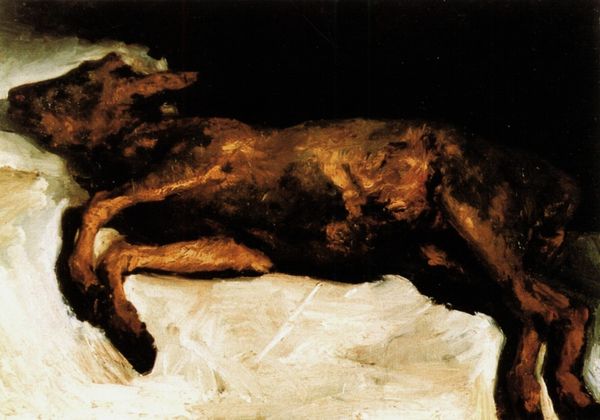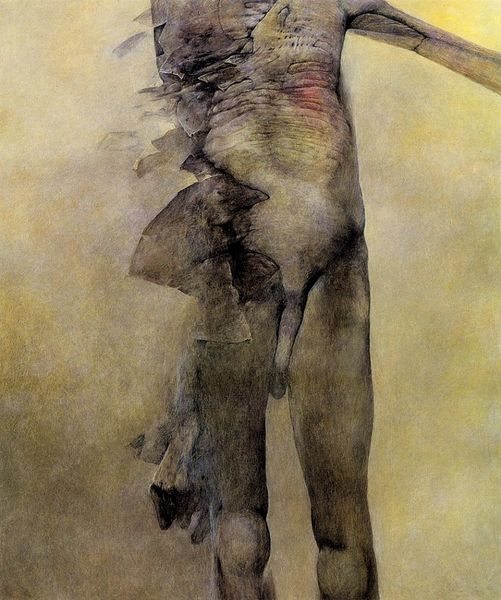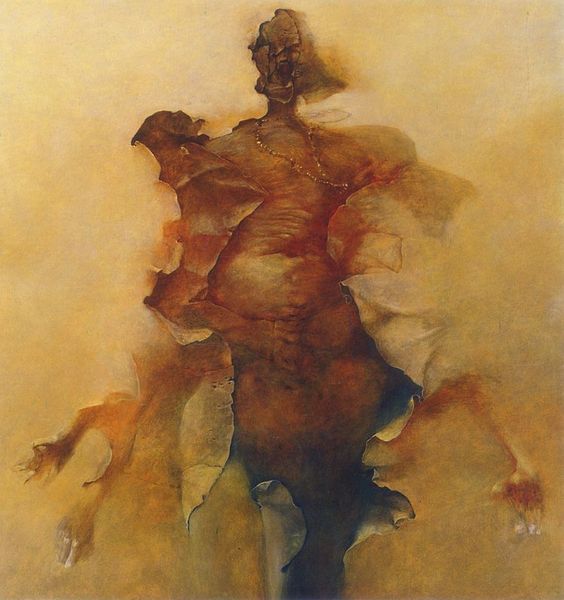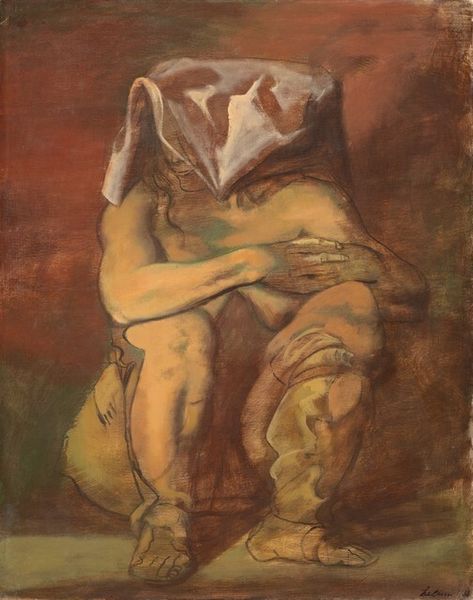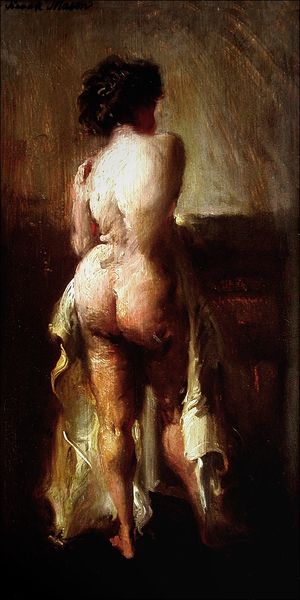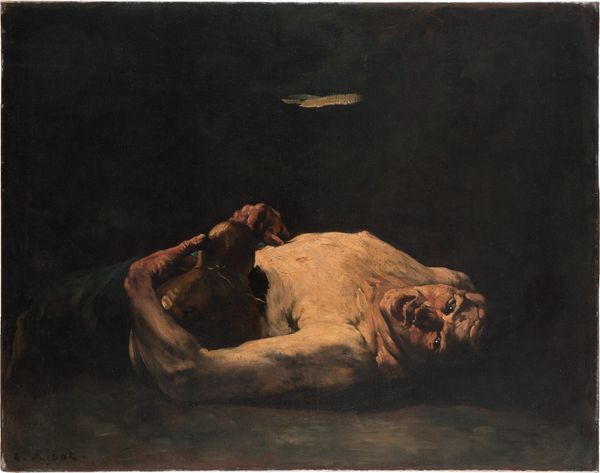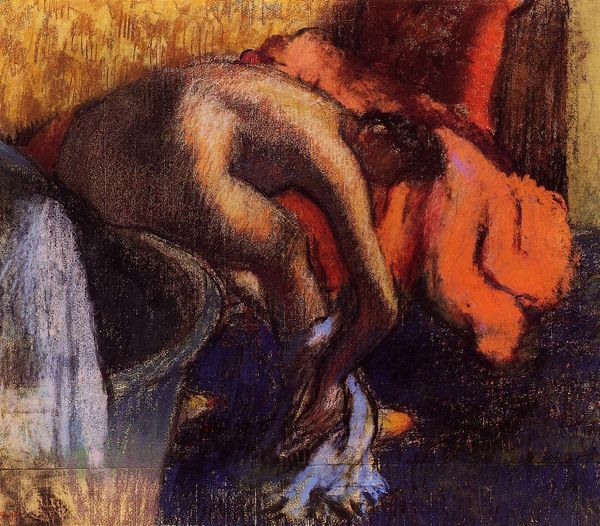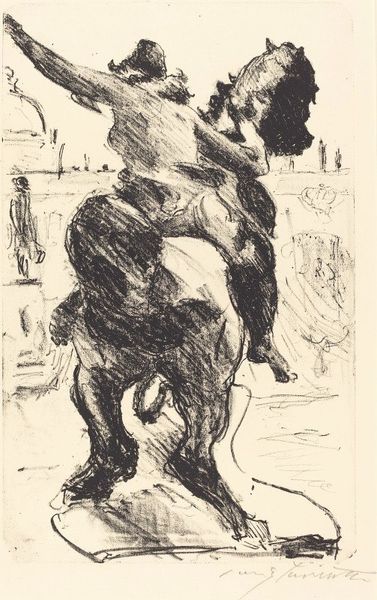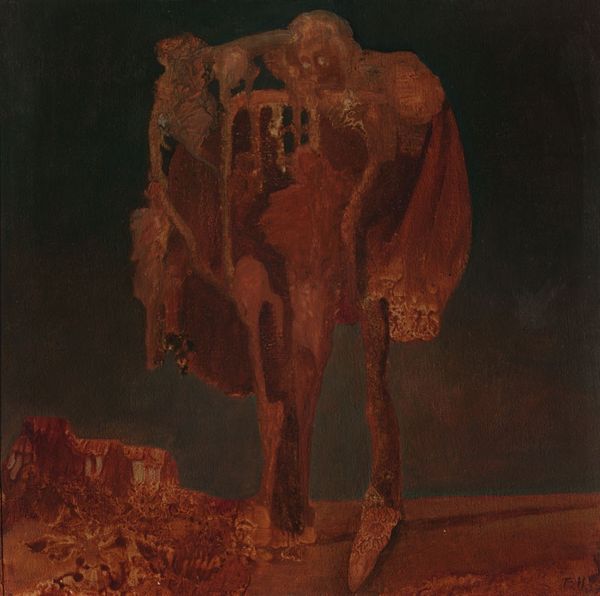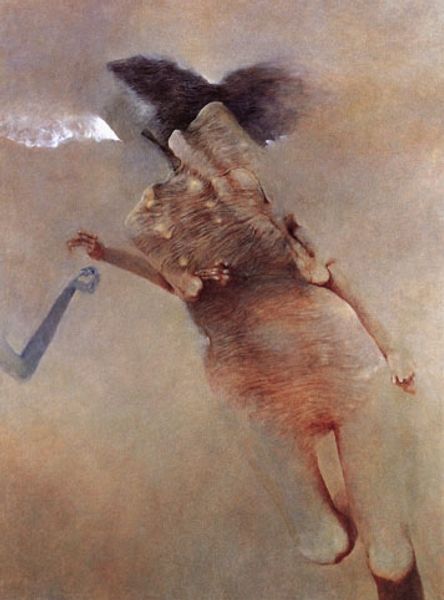
watercolor
#
portrait
#
impressionism
#
figuration
#
watercolor
#
female-nude
#
nude
Copyright: Public domain
Anders Zorn painted this watercolor nude study in the late nineteenth or early twentieth century. The model seems caught in a moment of private ablution, but with a second, clothed figure lurking nearby, Zorn implies a viewer, a watcher. In the late nineteenth century, the female nude was a common subject in academic painting, but it was also a flashpoint of social and political anxieties. In France, where Zorn spent much of his career, the nude was tied to the history of state-sponsored art and the politics of the Third Republic. Art critics and historians, such as T.J. Clark, have shown how these nudes were central to debates around class, gender, and national identity. Zorn was part of this artistic milieu, and his nudes reflect the social and institutional dynamics of his time. To understand this painting better, we might consult exhibition reviews, artists’ letters, and social histories of the period. This helps reveal the complex and contested meanings of the nude in modern art.
Comments
No comments
Be the first to comment and join the conversation on the ultimate creative platform.
